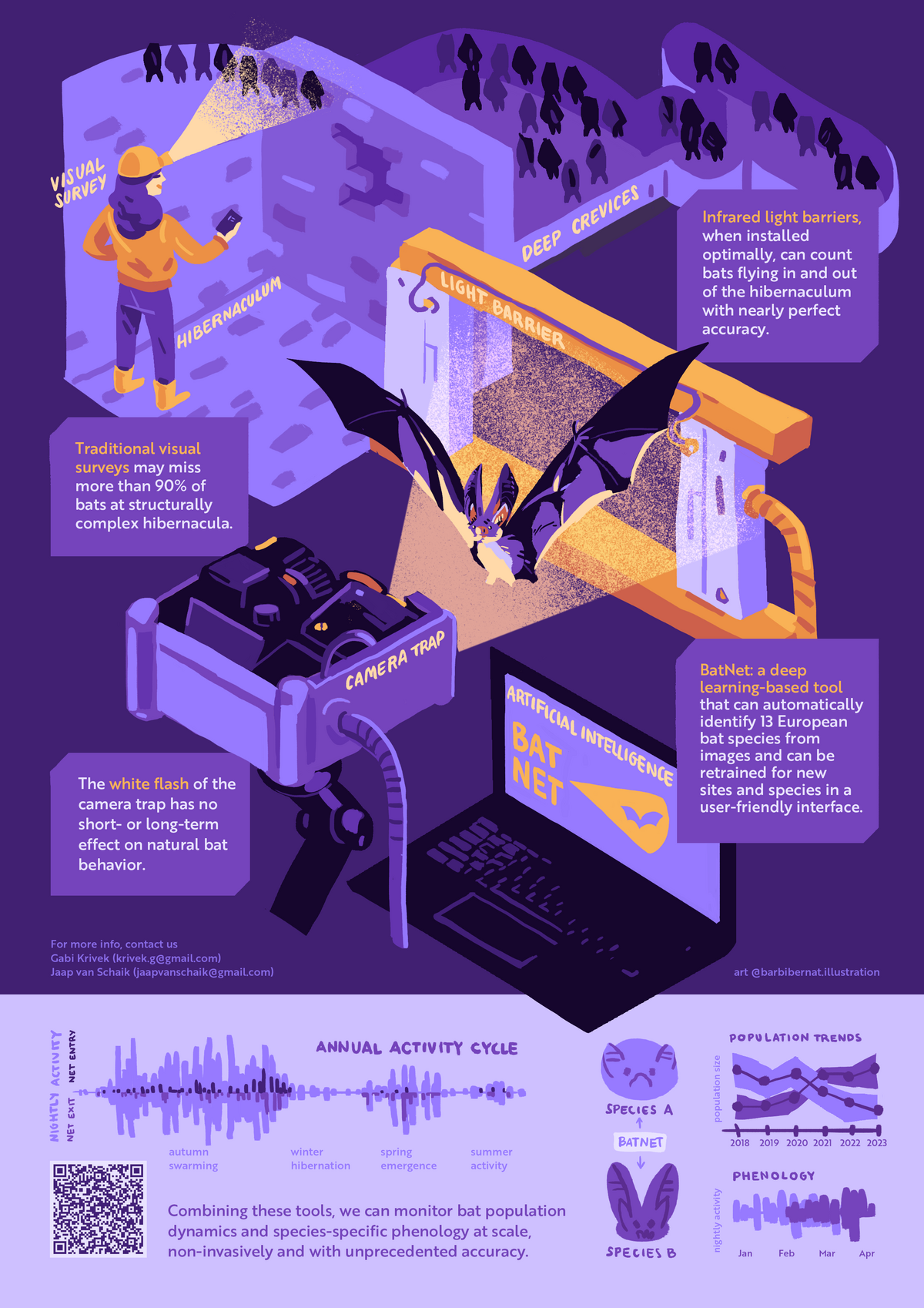
Dr. Gabriella Krivek
Applied Zoology and Nature Conservation
Soldmannstr. 14
17489 Greifswald
Tel.: +49 (0)3834 420-4358
Fax: +49 (0)3834 420-4252
gabriella.krivekuni-greifswaldde
Research Interests
Automated bat monitoring
Automated biodiveristy monitoring tools allow us to collect data at large temporal and space scales and to study the impact of human-induced environmental changes on biodiversity across regions, seasons and species. For monitoring European bats, infrared light barriers coupled with camera traps can be installed at the entrance of bat hibernation sites to automatically monitor their population dynamics and phenology. This method offers a unique, non-invasive way to quantify all bat movements in and out of a site at unprecedented accuracy, resolution and scale. However, the resulting "big data" requires efficient data analysis tools.
During my PhD, I developed analysis tools to process light barrier and camera trap data of bats, including standardized analysis pipelines and a deep-learning solution for automated bat species identification from camera trap images (BatNet). With these we can monitor population dynamics of bats at underground sites, and characterize the environmental drivers of hibernation phenology in different bat species.
Currently, within the BatTrend project, I am working on the integration of these automated monitoring methods to improve the assessment of bat population trends in Germany.
Publications
Krivek, G., Gillert, A., Harder, M., Fritze, M., Frankowski, K., Timm, L., Meyer-Olbersleben, L., Freiherr von Lukas, U., Kerth, G., van Schaik, J. (2023) BatNet: a deep learning-based tool for automated bat species identification from camera trap images. Remote Sensing in Ecology and Conservation. https://zslpublications.onlinelibrary.wiley.com/doi/full/10.1002/rse2.339
Video abstract about BatNet: https://www.youtube.com/watch?v=y7Zis3qVimI
Krivek, G., Mahecha, E.P.N., Meier, F., Kerth, G. & van Schaik, J. (2023), Counting in the dark: estimating population size and trends of bat assemblages at hibernacula using infrared light barriers. Animal Conservation. https://doi.org/10.1111/acv.12856
Krivek, G., Schulze, B., Poloskei, P. Z., Frankowski, K., Mathgen, X., Douwes, A., & van Schaik, J. (2022). Camera traps with white flash are a minimally invasive method for long‐term bat monitoring. Remote Sensing in Ecology and Conservation. https://doi.org/10.1002/rse2.243
Krivek, G., F. V. Florens, C. Baider, V. O. Seegobin, T. Haugaasen (2020). Invasive alien plant control improves foraging habitat quality of a threatened island flying fox, Journal for Nature Conservation 54, 125805. https://doi.org/10.1016/j.jnc.2020.125805
F.B.V. Florens, C. Baider, V. Marday, G.M.N. Martin, Z. Zmanay, R. Oleksy, G. Krivek, C.E. Vincenot, D. Strasberg, T. Kingston (2017). Disproportionately large ecological role of a recently mass-culled flying fox in native forests of an oceanic island. Journal for Nature Conservation 40, 85-93. https://doi.org/10.1016/j.jnc.2017.10.002

